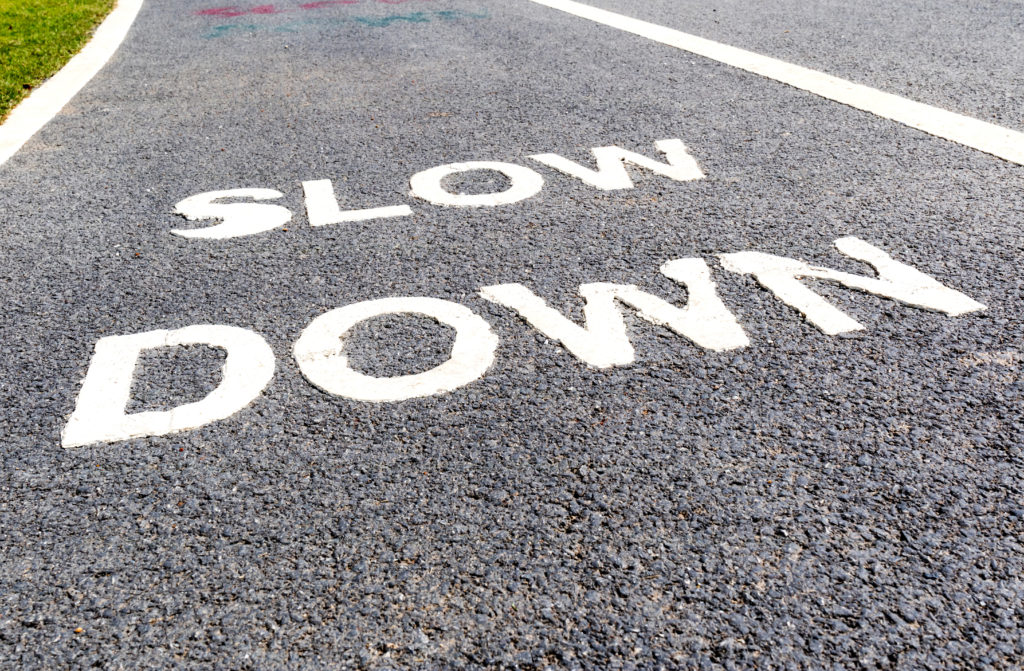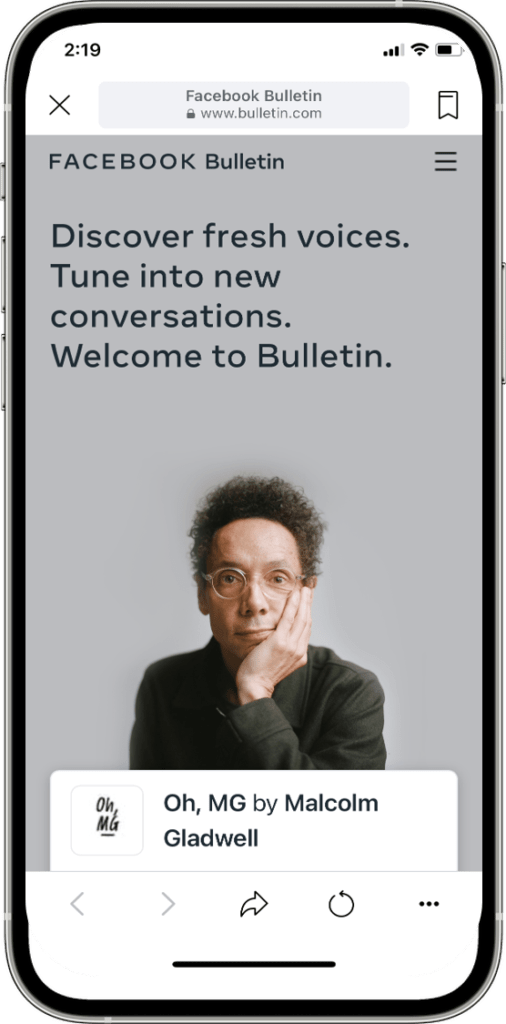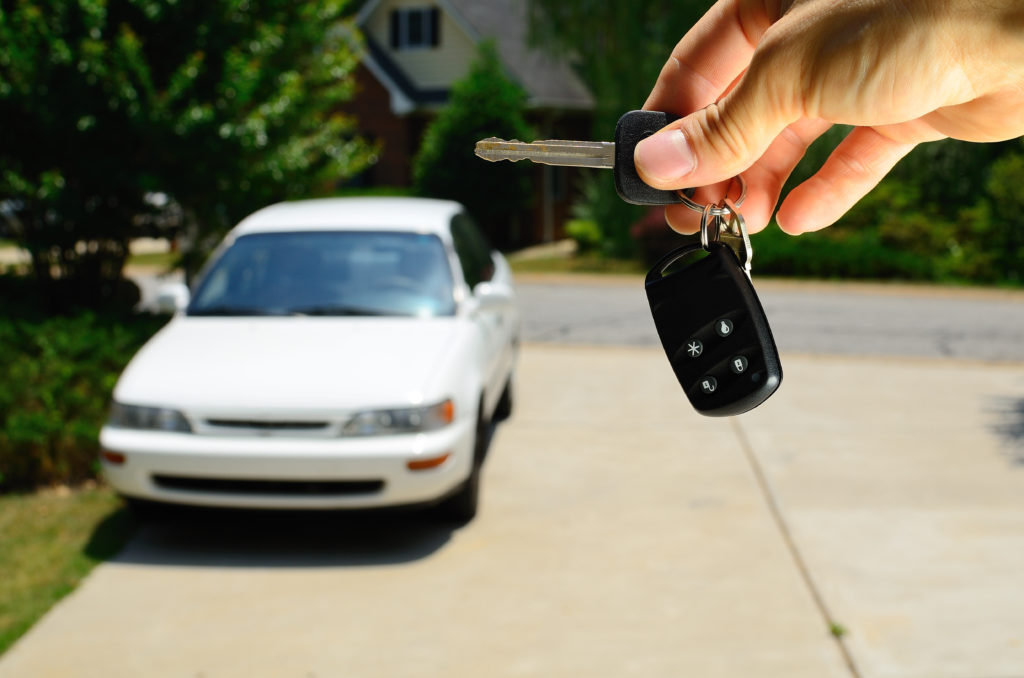
Being from Detroit, I’m fond of saying that cars are in my DNA. Over the years, Jacobs Media has championed broadcast radio doing a better job of connecting with the auto companies. Our three DASH Conferences helped pave the way for the NAB to proactively pursue stronger relationships and more dialogue with car manufacturers – also known as the OEMs.
And why not? For nearly a century, all the automakers (OK, Tesla is the outlier) have graciously included radio hardware in their dashboards. For no fee. And broadcast companies have expertly monetized radio listening while people drive, making cars the #1 listening location. Talk about a scalable business – for radio, the car has been the ultimate pathway to reaching consumers of all ages as they work, play, and spend money.
But as our visits to CES and our DASH endeavors have revealed, changing dashboard technology poses a threat to radio’s pole position in cars. The radio industry co-existed just fine with the in-dash cassette and CD players, but the “digital dashboards” of recent years open the door to every conceivable entertainment and information option, including video screens. The more choices drivers and passengers have in cars, the greater the challenge for radio broadcasters.
The in-car connectivity revolution started with the ability to pair a smartphone to the car. This basic feature is now standard equipment in virtually every vehicle that rolls off the assembly line. Android and iPhones are the “gateway drug” to digital content, whether it’s podcasts, streaming audio, talking books, or the phone itself – all media sources that erode radio listening in the car.
And it appears we’re entering another period where there’s a palpable buzz around cars due in no small part to two megatrends that promise to existentially change this storied industry:
Autonomous and electrification
We’ve been tracking both of these developments via our CES tours and work with futurists like Shawn DuBravac. Each of these technologies is moving closer to becoming a bona fide part of the driving (or self-driving) experience. And there’s a unique mashup where both of these automotive innovations will be present in the same vehicles. The aforementioned Tesla has led this charge, combining electric technology with its Autopilot feature – both of which amaze and delight its growing legions of satisfied owners.
Of the two, autonomous has hits more speed bumps. It’s a more complicated technology. As engineers explain, cars that drive themselves are safer than you or I behind the wheel in 99% of situations. It’s that 1% – the unforeseen anomalies – that pose the greatest challenge to autonomous becoming mainstream.
But it will happen.
Earlier this week, author and futurist Malcolm Gladwell wrote an essay for Facebook’s new newsletter platform, Bulletin (more on that in another post).
“Have we misunderstood the future of the automobile” details a ride that Gladwell took with his podcast producer, Jacob Smith. The vehicle was a Chrysler Pacifica hybrid equipped with Google’s Waymo technology.
Gladwell’s story about autonomous cars is subtitled “It’s not what you think. It’s much better,” and that tells you a lot about how he views a future where we’re schlepped around by driverless vehicles.
He describes an almost Zen-like experience being in the backseat of a car with no one in the driver’s seat, observing this technological wonder safely and methodically making its way through Phoenix traffic.
In his unique way, Gladwell describes an autonomous future that sounds downright fun. To test the technology, he moves to pedestrian status, intentionally trying to be hit by the autonomous car – which turns out to be saner and more sensible than most of us:
Season six of Revisionist History. Reporting: underway. pic.twitter.com/TGDqas8yNX
— Malcolm Gladwell (@Gladwell) February 26, 2021
And my favorite paragraph from Gladwell’s story analyzes Google’s Waymo technology – compared to say human drivers – like us:
“Waymo doesn’t have emotions. Waymo doesn’t text. Waymo doesn’t eat a burger and drive with his knees. Waymo doesn’t get angry if you behave like an idiot. Waymo doesn’t give you the finger and accelerate sharply. Waymo doesn’t do road rage. Waymo wants to live and let live. Waymo is your grandmother, only with lightning reflexes and perfect vision to 300 yards. In a world of Waymos, cars aren’t the madmen anymore. But if cars aren’t the madmen, guess who gets to be crazy? The answer is obvious, my friends. We do.”
And then there’s electrification.
This is a technology that’s not just ready for prime time. It’s been here, done that, and getting better with each passing year. Pew tells us more than 230,000 electric cars were sold in the U.S. last year. That’s down from 2019, but COVID was the culprit. As you have no doubt seen while watching commercial television, the EV onslaught is in full swing.
Perhaps the biggest mover this side of Musk is Ford. Their iconic F-150 truck line is the best selling vehicle in the world. And now, it ‘s transforming to the electric platform. The debut :90 spot for this vehicle is more exciting than Metallica coming to play your town this summer.
https://www.youtube.com/watch?v=GbmS-YGtzWo
But before we head down to a nearby dealership, let’s pump the brakes a bit and slow down. While these automotive advancements may be around the corner, it may be some time before they’re sitting in your driveway. That’s because new car acquisition may be slower than most people think.
If you’re like a lot of people, these dual automotive technologies aren’t about to change your life anytime soon. In fact, the odds are you’re driving an older car that’s running well. And that brings us to the conversation about car dashboards and how they’re equipped. Because for radio broadcasters, that’s a linchpin issue. Simply put, cars that are a decade old – or older – are rather light on those much-advertised, slick infotainment features.
That news became clear to me when I read a story in Car and Driver that the average car on American roads is now more than 12 years-old – an all-time high. COVID gets some of the credit, but auto longevity has been on the rise as vehicles have become better built, more reliable, and safer.
Of course, another factor is economic. According to the research study’s author, IHS Markit, it may be the reality that the average price of a new vehicle is nearly $38,000 – an increase of more than 3% from the year before.
IHS Markit, it may be the reality that the average price of a new vehicle is nearly $38,000 – an increase of more than 3% from the year before.
Then there’s the reality all these older vehicles may last even longer. Thanks to the pandemic, fewer miles were driven in 2020. And as work from home continues for millions of Americans, traffic on our roads is still much lighter than it used to be. That means less wear and tear on all those used cars.
And that also means fewer touchscreen dashboards.
Fewer SiriusXM free trial plans.
Fewer vehicles with Apple CarPlay and Android Auto.
 In short, more vehicles where the best option is good old AM/FM radio – the easiest, simplest, one-button solution for entertainment and information when we’re on four wheels.
In short, more vehicles where the best option is good old AM/FM radio – the easiest, simplest, one-button solution for entertainment and information when we’re on four wheels.
Inevitably, those old Saturns, Subarus, and Silverados will break down, forcing their frugal owners to purchase a new or newer vehicle – a moment when many will discover new options in the dashboard. It’s a window that exists now, but it won’t be open for too long.
Radio broadcasters would be wise to make the best use of this time. That means assessing their content and services, and how they match up with the myriad platforms, channels, and choices available in every new vehicle manufactured, whether it’s entry level or the hottest new Tesla or Mercedes-Benz.
The clock is ticking as technology impacts the cars we buy and begins to warp how we drive (or don’t drive). For radio, a focus on brand building and audience engagement in local markets will be time well spent.
This is not the time to slow down.
Thanks to Lori Lewis for the heads-up.
- The Secret To Making A Great Podcast (And Great Radio) - April 16, 2025
- I Read The (Local) News Today, Oh Boy! - April 15, 2025
- Radio, Now What? - April 14, 2025




A wild card these days may also be leasing.
Every three years or 36,000…
Our listeners are presented with the updated tech screen—
The reveal of what’s new and what’s becoming less relevant.
i lease my cars and have done so for 40 years. There’s no better easier way to experience new dashboard (and other) tech. But I’m still blown away by the 12 year-old car figure – and that’s the average.
You and Malcolm paint a scary picture, Fred. Just yesterday you highlighted what provider categories people listen to when they’re “relaxing at home”–and terrestrial radio was low on the list for most of them. Where’s radio going to be when the car becomes just another room of their house, one that conveniently transports them from place to place without their having to pay much attention to the surroundings? All of audio, never mind radio, could be up for grabs when the traveler decides he wants to watch a movie instead,
Iconoclast that I remain, when its OEM audio system bought the farm I put an HD Radio receiver into my ’91 RX-7, but the 2010 Volvo we bought in ’14 already had it. Both of them have a USB port as well, but unless I’m catching up with a podcast it’s the radio that has my attention. Others’ mileage may vary.
Your first paragraph sums up my fears and anxiety. Through the death of the Walkman to the birth of the iPod, and the advent of podcasts, satellite radio, and streaming, the car has always been the listening location radio could count on. That is fading. Thanks for commenting.
Old SAAB dead ( the last of many unfortunately) but the new Subaru full of tech items listed above. The next breed of cars like the E-Mustang, Polestar2 etc. are going to be the norm in 3 years time. BTW much as I respect Malcolm Gladwell, for context, his Facebook piece is was paid by one of the Big Three. As always thanks for the thought starters Fred.
Andrew, thanks for chiming in on this, and enjoy your new Subaru.
The car has already changed……check out new Tesla vehicles as they do not offer AM radio as standard equipment……it’s an option that will cost you $2,400.00. Nobody in their right mind would pay $2,400.00 for AM radio.
Don, thanks for this. Tesla has had an impact in many different ways. Will “cancelling” AM radio be another?
We’ve been staring this inevitability in the ‘dashboard’ for some time. I’ve come to the conclusion that future revenue will be divided into smaller segments of opportunity. OTA, streaming, podcasts, as well as the events we’ve all be forced into. Radio is no longer a simple business with high margins. The prices paid for radio stations these days reflect that reality.
Right you are, Jackson. There’s nothing simple about the radio broadcasting business these days. The most reliable thing especially in recent years has been easy, direct access and visibility in cars. As you point, not necessarily anymore.
Another great article!
Thanks, David! (So how old is your car?)
Before I talk about my 2009 Used Camry let me calm everyone down with some really startling news on how radio stays relevant and and it’s not complicated. BE ENTERTAINING.
Ok, my low fi 2009 Camry has a radio and a CD player. I can charge my phone with a cord and that is as high tech as it gets. Most of the commercial stations in San Francisco offer a limited and tired schedule of music. You won’t be pestered with many surprises. That is the perfect storm for losing it in this exceptional city of future geeks. I love cars. Would like to own my high school car again, a 1955 Ford crown Vic. However, I plan on leasing a tech loaded new one soon and then those radio knobs won’t get much action if they don’t wise up.
Thanks for the honest warning, Dan. It’s just a matter of time before that Camry goes to the car graveyard. And your simple two-word solution? Couldn’t have said it any better myself.
It’s all how you look at it: I was well into my FM radio career before FM was widely available in cars, so losing car radios is not earthshaking. Many more listeners are working from home these days, circling back to that early FM @home vibe — an unhyped companion with a vast music library.
We’re a family of national radio producers so when we jump in the car it’s an opportunity to listen to the feed — or audition stations anywhere via TuneIn. And our favorite local stations are right there in presets. We can explore new music with all the music services. Not bad at all.
Our goal is to create music programming for our affiliates that is more appealing (through shared values), sticky and cool than anything else music fans can find in the click-verse. I would encourage readers to embrace the changes and be on the wave, not under it.
EVs not yet ready for prime time? Again, a matter of perspective. We’ve been driving a LEAF for 8 years (still going strong) and a Tesla Model 3 for three years. There’s no going back, only FFWD >>
Greg, thanks for these spot-on comments about entertainment and information in the car. You didn’t mention AM radio in Teslas – another area where radio and automotive could benefit with a chat.